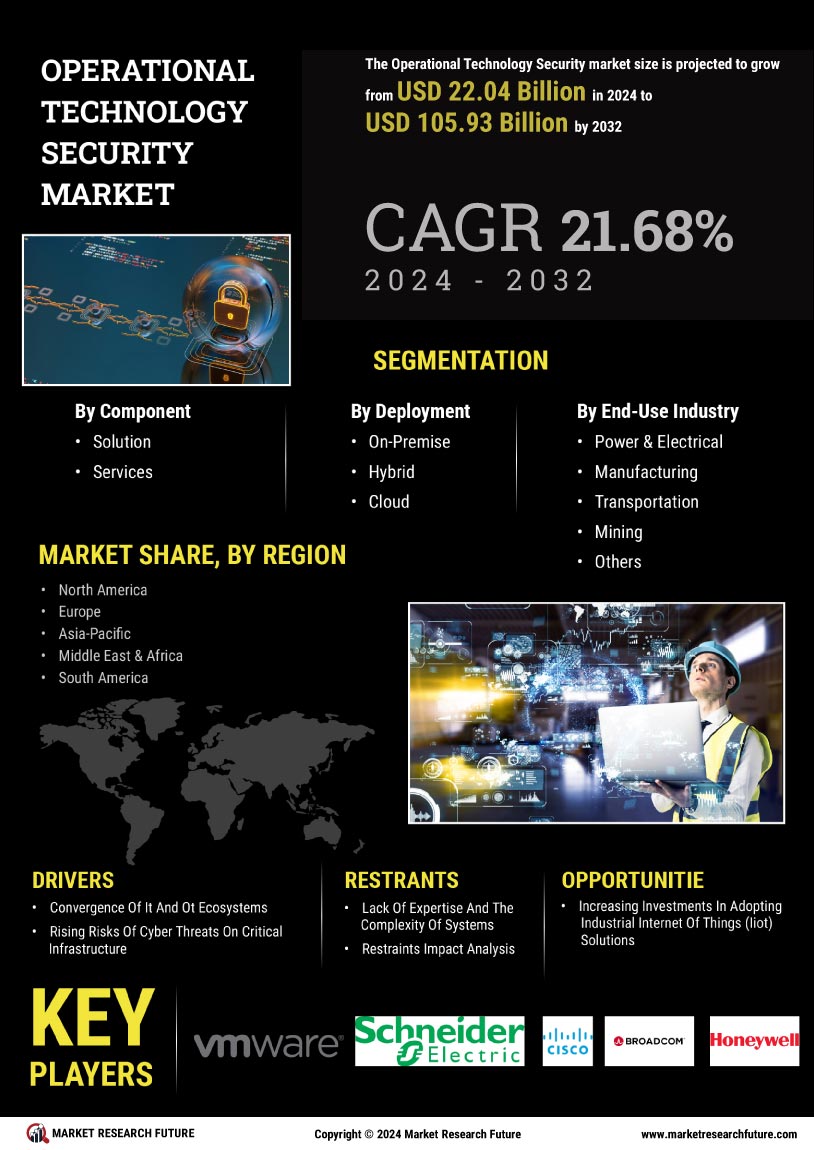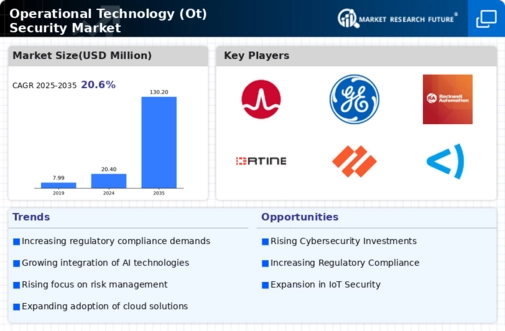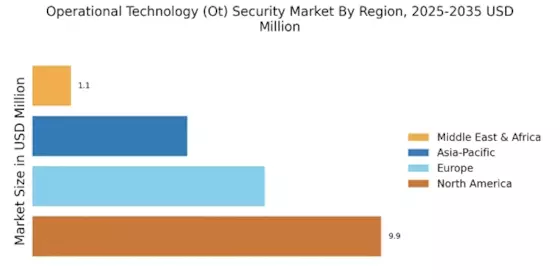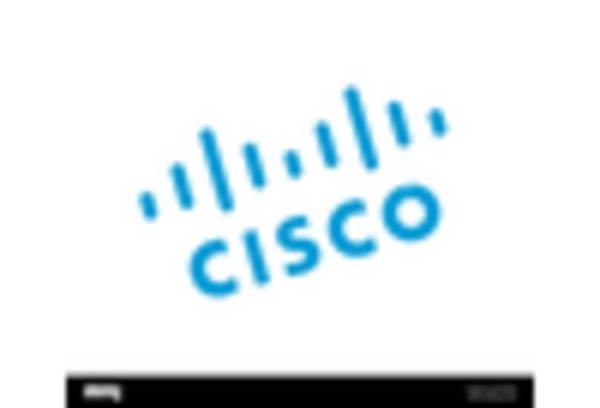Increased Cyber Threats
The rise in cyber threats targeting critical infrastructure has become a pressing concern for the Operational Technology (OT) Security Market. As industries increasingly rely on interconnected systems, the potential for cyberattacks has escalated. Reports indicate that the number of cyber incidents affecting operational technology environments has surged, prompting organizations to invest heavily in security measures. This trend is likely to continue, as the sophistication of cyber threats evolves. The Operational Technology (OT) Security Market is responding by developing advanced security solutions that can mitigate these risks, ensuring the integrity and availability of essential services. The urgency to protect against these threats is driving demand for comprehensive security frameworks that encompass both IT and OT environments.
Integration of IT and OT Systems
The convergence of Information Technology (IT) and Operational Technology (OT) systems is reshaping the landscape of the Operational Technology (OT) Security Market. As organizations strive for greater efficiency and data-driven decision-making, the integration of these systems has become increasingly prevalent. However, this convergence also introduces new vulnerabilities, as traditional IT security measures may not adequately protect OT environments. Consequently, there is a growing need for security solutions that can address the unique challenges posed by this integration. The Operational Technology (OT) Security Market is responding by developing innovative security frameworks that facilitate seamless integration while ensuring robust protection against cyber threats. This trend is expected to drive significant growth in the market as organizations seek to secure their interconnected environments.
Adoption of Advanced Technologies
The adoption of advanced technologies such as artificial intelligence, machine learning, and the Internet of Things (IoT) is significantly influencing the Operational Technology (OT) Security Market. These technologies offer enhanced capabilities for monitoring, detecting, and responding to security threats in real-time. As organizations implement IoT devices and smart technologies, the attack surface expands, necessitating advanced security measures. The Operational Technology (OT) Security Market is witnessing a shift towards solutions that leverage these technologies to provide proactive threat detection and response. This trend is likely to accelerate as organizations recognize the need for sophisticated security measures to protect their increasingly complex operational environments.
Regulatory Compliance Requirements
Regulatory compliance is a significant driver for the Operational Technology (OT) Security Market. Governments and regulatory bodies are increasingly mandating stringent security measures to protect critical infrastructure. Compliance with standards such as NIST, ISO, and sector-specific regulations is becoming essential for organizations operating in sectors like energy, manufacturing, and transportation. Failure to comply can result in severe penalties and reputational damage. Consequently, organizations are compelled to invest in robust security solutions that align with these regulations. The Operational Technology (OT) Security Market is witnessing a surge in demand for compliance-driven security technologies, as companies seek to not only meet regulatory requirements but also enhance their overall security posture.
Growing Awareness of Cybersecurity Risks
There is a growing awareness of cybersecurity risks among organizations operating in the Operational Technology (OT) Security Market. As incidents of cyberattacks on critical infrastructure become more widely reported, organizations are recognizing the potential consequences of inadequate security measures. This heightened awareness is driving investments in cybersecurity solutions, as companies seek to protect their assets and ensure business continuity. The Operational Technology (OT) Security Market is experiencing increased demand for security assessments, training, and incident response services. Organizations are prioritizing cybersecurity as a critical component of their operational strategy, leading to a more proactive approach to securing their operational environments.


















Leave a Comment